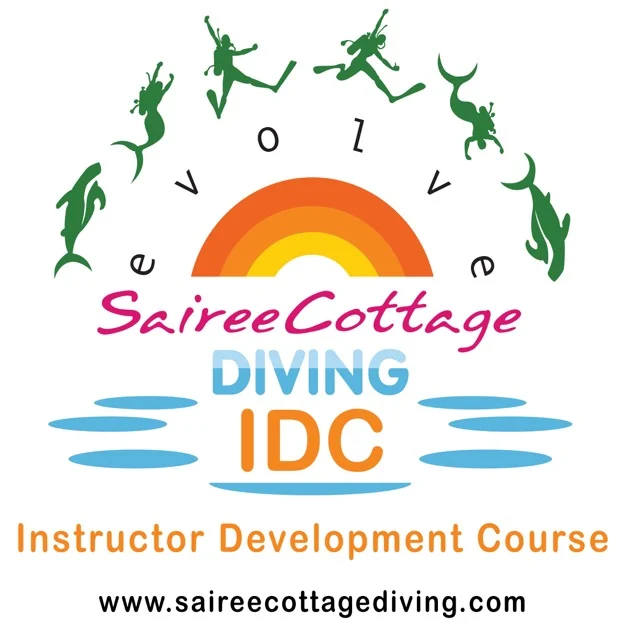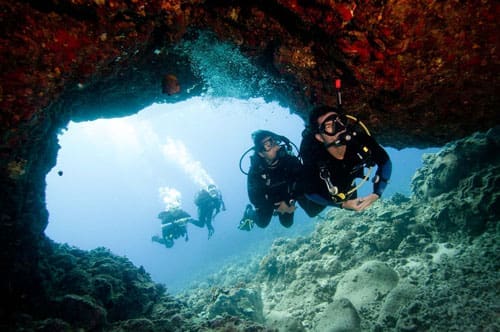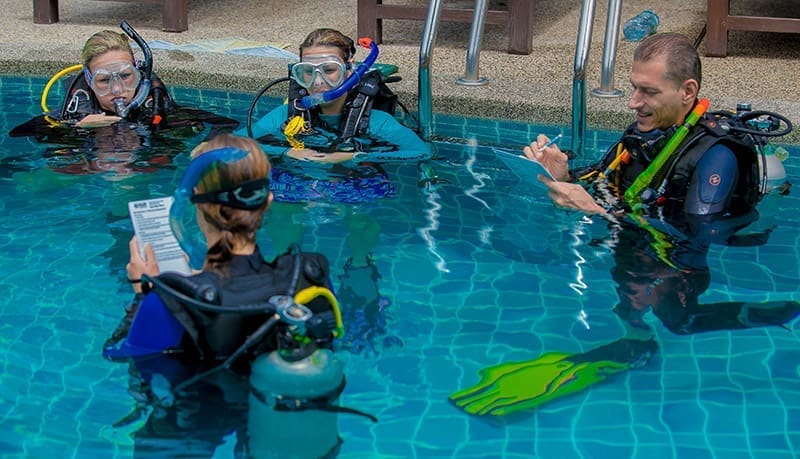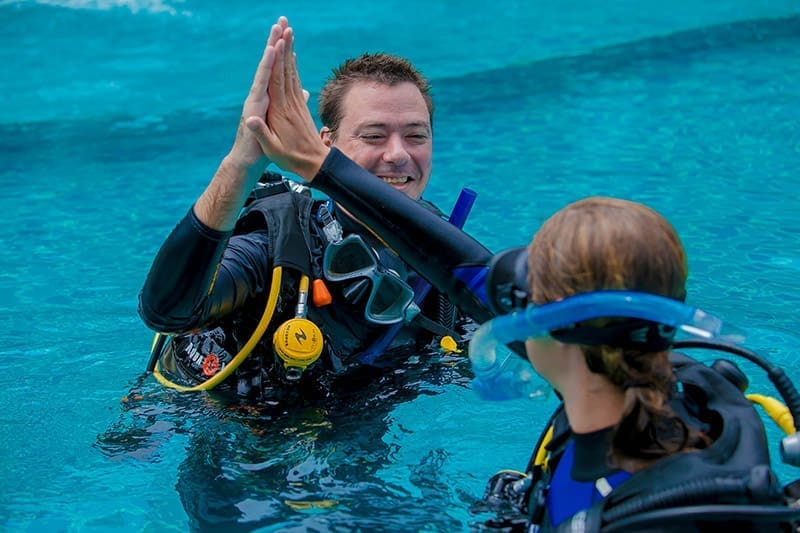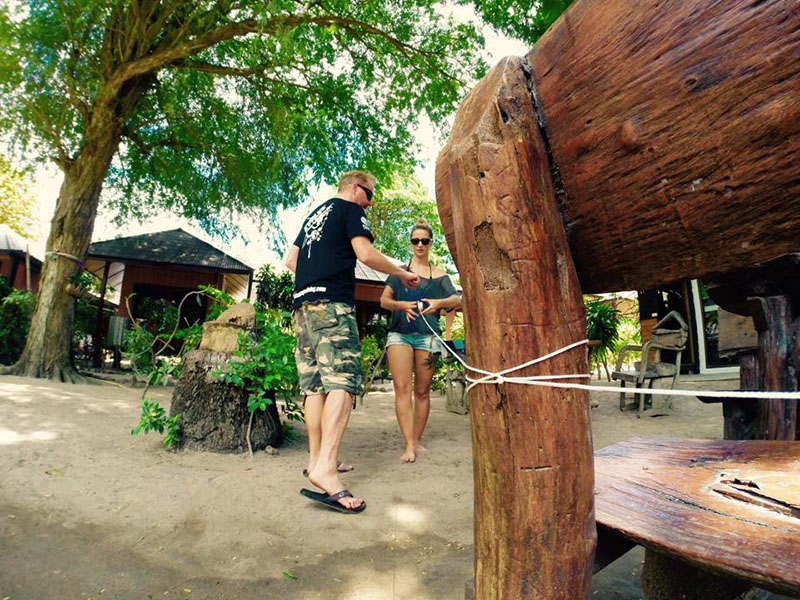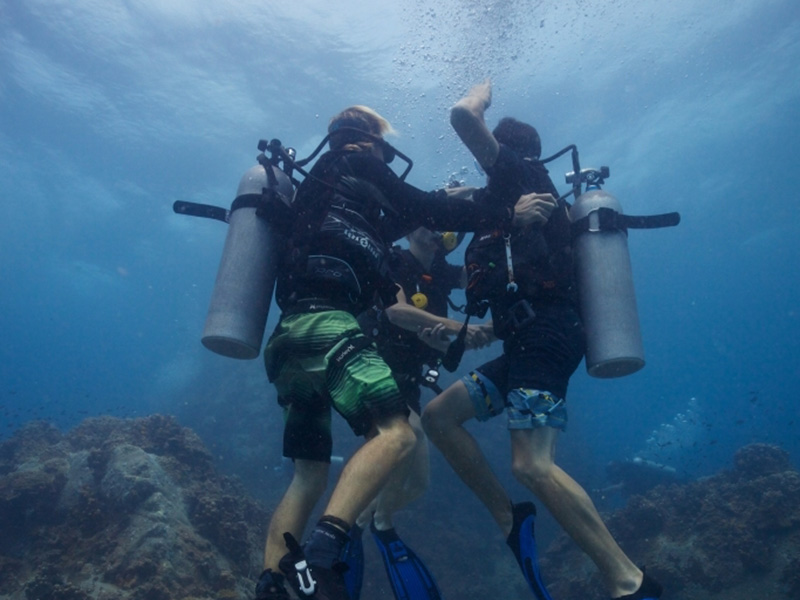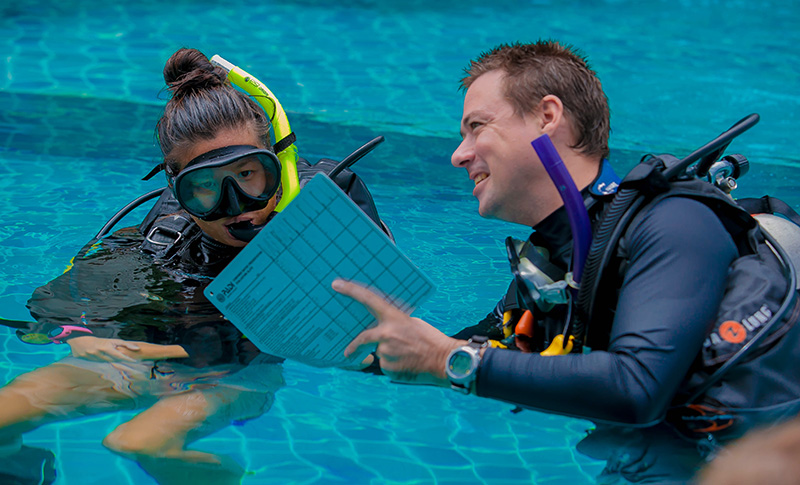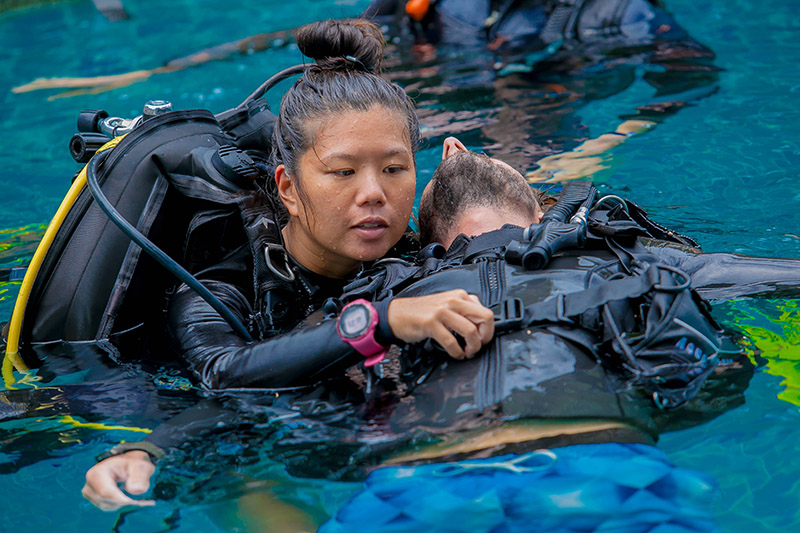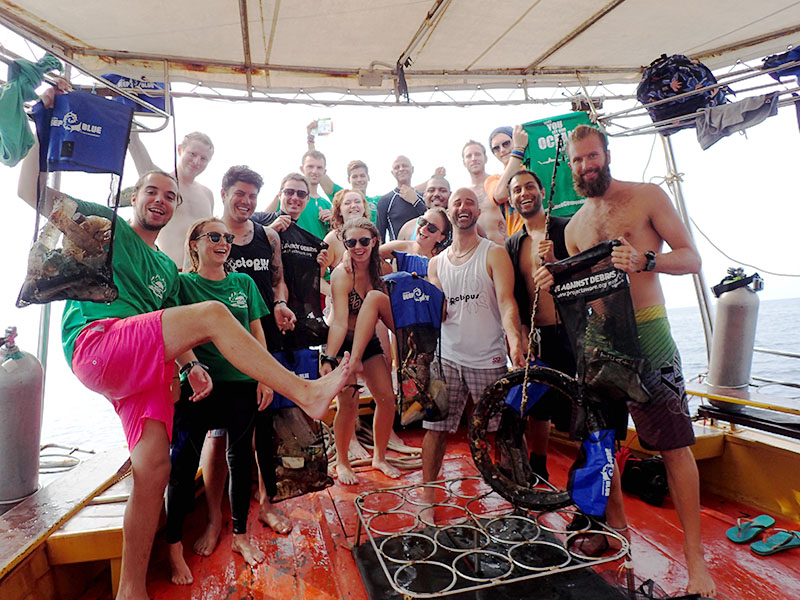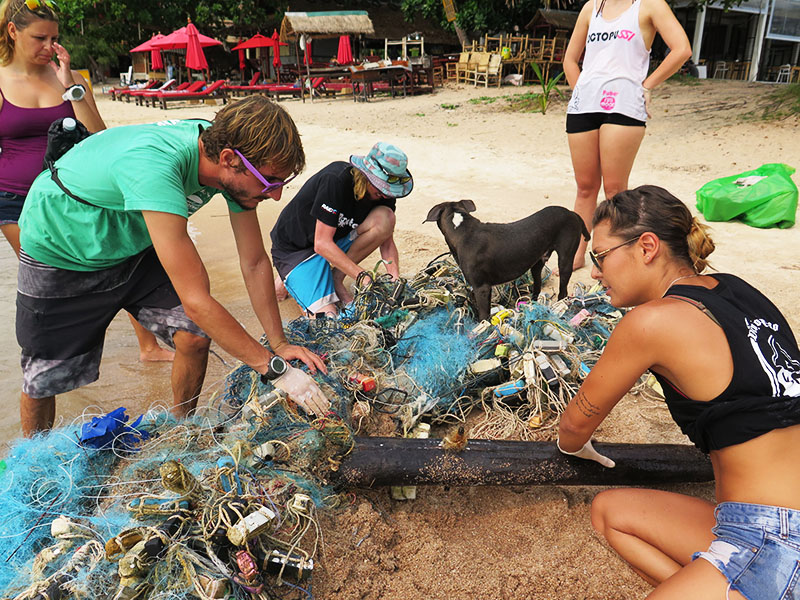Choosing the best dive school for you can be a tricky job given the quantity and variety of options around you. There are so many good dive schools in the world, but unfortunately, there are also many bad dive schools. So how do we go about choosing the best dive school? And how can we get the best diving course and the best diving experience? Here are 8 top tips in making the right choice of dive school.
Tip 1: Check Online for the Best Scuba Dive School
The future of choosing the best dive school is online research. Almost every dive school in the world has a website that explains what their dive school is all about, shows pictures of their facilities, what dive trips they offer and all the scuba diving courses they can teach you. The first step for choosing the best dive school is to get a cup of coffee, find a couch or even relax on your break in the office and start surfing the internet for some of the best dive schools out there.

Tip 2: Use Google as Your Search Engine to Find the Best Dive School
Many of us use Google to look up and find most of what we seek online. Using Google to find the best dive school is by far one of the best online tools you can use to find the most relevant, active and best dive school website you are looking for.
So, what are the best words to type into the search box to find the best dive school? I recommend typing these (just copy and paste): How to choose the best dive school, best diving school, best Dive Instructor, how to avoid bad Diving Instructors, best dive school on Koh Tao (or any other location), best dive school trip advisor and so many more. You can also replace dive school with other words like: dive centre, dive shop, dive resort.
Tip 3: Read Through the Online Reviews when Choosing the Best Dive School
Checking online reviews is one of the most powerful tools there are these days especially for choosing the best dive school in the world. Online reviews give you the opinion of real people about real dive schools, Divemasters and Diving Instructors. There are many online review sites to choose from, but the top sites for choosing the best dive schools are: TripAdvisor, Facebook, Google+ and Rate Your Dive.
The down side of these, of course is that everyone has their opinion, which means that bad customers can also leave bad reviews out of spite. My tip is to look at the difference between good and bad reviews and if the majority (more then 95%) are good then you are probably looking at one of the best dive schools available there.
Tip 4: How to Choose the Best Dive Location or Site in the World
Choosing the best dive school is very important, but there are so many good dive schools in the world. Before you even try to look for a good dive school it is important to choose the best location in the world to learn how to scuba dive.

To find the best location and dive site for you to learn how to scuba dive depends really on how and what you want to learn to get the best out of your scuba diving experience. First you need to ask yourself some questions like: where would I like to scuba dive? Do I want to learn how to scuba dive in fresh or salt water? Do I want to do a short intense diving course or a longer more relaxed diving course? Do I like to be in cold water, temperate water or warm tropical water?
Some people argue it is best to learn how to scuba dive in the hardest conditions possible with scuba diving courses lasting up to 6 weeks in length, while others say that it is much better and easier to first learn how to scuba dive in calm warm tropical waters with the Diving Instructor just focusing on diving so you can easily learn the initial steps of scuba diving in only 4 or 5 days. I think that this depends on the diving student, the teaching capabilities of the Diving Instructor and the dive school in question. Anyway, the best dive schools will always make sure that you will become the best scuba diver possible.
Tip 5: Check Different Websites
With so many great dive schools around, it is very important to check and compare different websites. A couple of the things you want to look for are how the website is structured and how user-friendly it is to navigate. You also want to look for any pictures, a gallery and any YouTube videos that really show their dive school in action. You also want to look for the font they use and the general colours, general quality and any flaws on the website as it usually represents their business and management attitude towards the dive school and your training.
Tip 6: Shop Around to Find the Best Dive School
One of the problems these days is that although a good-looking website often indicates a well-run business (see above), some scuba diving schools’ websites can look artificially great because they just used nice (sometimes fake or “borrowed”) pictures or they hired a Website and Search Engine Optimization guru to not only make their website look fantastic, but also to make it rank high on Google.
For this reason I highly recommend you that when you find the right dive school online you also properly check them out when you arrive and allow yourself the opportunity to shop around any other dive schools there. Sadly enough a dive school can look fantastic online, but then when you get there it looks awful – they gave you false information in order to get your booking. Again online reviews are key here and usually their Facebook page will also hold a lot of clues to the real truth.
Some of the best dive schools will have amazing facilities like the best swimming pools, the best diving equipment, the best and nicest looking classrooms and the best looking dive boats. These facilities can cost a lot of money but it usually is a sign of how much they care about their diving customers. Diving and dive resort facilities usually say a lot about the operation of a dive school.
Tip 7: Talk With Your Diving Instructor
Ask to meet your Diving Instructor when you check out the dive school. This is very important to ensure you get the right Diving Instructor for you. The Diving Instructor usually represents the dive school quite well, which means that if you meet one of the best Diving Instructors, then you are usually also at one of the best dive schools. This doesn’t work in all cases as there is still the possible fact that a few bad diving schools employs some of the best Diving Instructors and vice-versa.
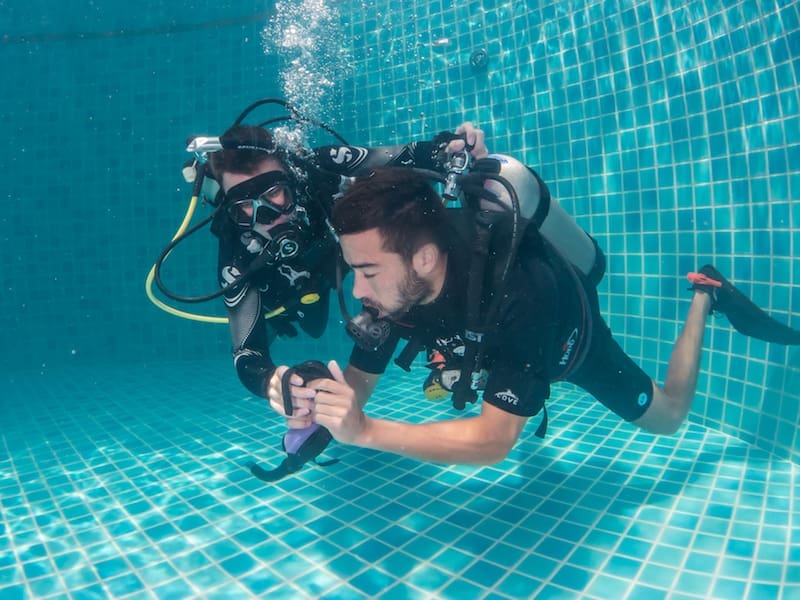
When you meet your Diving Instructor make sure you ask the right questions to make sure you are making the right choice. Ask questions like: How long have you been a Diving Instructor? What would happen if I get scared during the course or if I can’t equalise my ears? Tell me more about where we go diving? And why did you become a Diving Instructor?
Tip 8: Compare Different Prices to Find the Best Dive School
Getting the right price is very important as diving can be an expensive activity. But be careful not to go too cheap. Some of the best places in the world to learn how to scuba dive have a lot of dive schools operating there, so the competition can run high. High competition between dive schools sometimes leads to price wars. As much as that sounds like a great thing, it sometimes leads to cutting corners and cutting costs which leads to a much lower quality diving course.
Some of the best dive schools will have the slightly higher prices than the competition to ensure you get the best Diving Instructors and can enjoy some of the best facilities in the dive industry. As the say: “You get what you pay for”.
Conclusion:
Finding the best dive school is not always that easy as there are so many dive schools in the world to choose from. The good news is, however, that there are many good dive schools out there, some with amazing Diving Instructors working for them. Just remember to spend some time researching the best dive school and hopefully this article can help you find that “best dive school” you’re looking for.
Have you already had a fantastic experience with a dive school? Then please share it in the comments below and explain why you thought it was one of the best dive schools out there. This will help others make a more informed decision about where to go for their scuba diving holiday.
